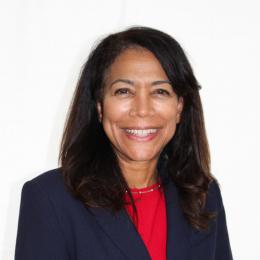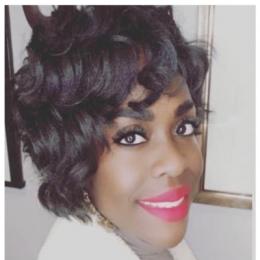It’s common these days for employers to say they want you to bring “your whole self” — or sometimes articulated as “your authentic self” — to work. But what does that really mean? And what role, if any, should we, as in-house, counsel play in this?
The importance of authenticity in leaders is well documented. Numerous articles address the importance of living a life that aligns with your values and offer strategies on how to be an authentic leader by, among other things, being genuine, vulnerable, and a good listener.
In the context of DEI, authenticity means something else. It’s about being who you are without having to conform to someone else’s expectations of how you should show up in the workplace.
It’s about being who you are without having to conform to someone else’s expectations of how you should show up in the workplace.
An important clarification: We’re not referring to permission to dispense with all societal norms. Rather, we are referring to the freedom of employees from underrepresented communities to work without having to engage in what has been termed “covering behaviors” — just to “fit in.”
What are covering behaviors?
Dr. Christie Smith of Deloitte and NYU Law Professor Kenji Yoshino have identified four covering behaviors in their seminal work: Uncovering Talent: A New Model of Inclusion.
Appearance
People in marginalized communities sometimes alter their appearance, speech (called code-switching), and mannerisms to gain acceptance.
Black women using chemical products to straighten their hair out of a concern that wearing their hair in its natural state might be perceived as unprofessional is one example. Some women eschew dresses at work in favor of suits in an effort to be taken seriously.

Some Southerners change their accents for fear of being perceived as less intelligent. Employees with names that others may find challenging to pronounce tolerate — rather than correct — the constant mispronunciation
Affiliation
People avoid actions commonly associated with marginalized identities in order to negate stereotypes.
A mother not talking about her kids in the workplace for fear of being perceived as less committed to her career is one example. Or an African American male withholding legitimate constructive criticism on a project to avoid being seen as threatening. Or a person born into a lower socioeconomic class avoiding disclosing the fact he grew up poor.

Or a person with a medical condition taking personal leave to get treatment rather than FMLA so that she is not perceived as less capable because of her illness. Or a person with a mental health condition, for example social anxiety disorder, who continues to engage in certain work activities that exacerbate the condition for fear of being judged or critiqued, or worse, that the condition may be used against them.
Advocacy
A marginalized person may avoid speaking up on behalf of their group out of a concern they might be seen as divisive or too confrontational.
A Latina might ignore a slur against her community. An employee might be reluctant to join an Employee Resource Group that focuses on their demographic. A conservative might suppress their political views. An Indian woman might resist mentoring another Indian woman out of a fear she’ll be labeled as playing favorites.

Association
Avoiding contact with other group members to avoid being seen as different.
Asian Americans might adopt Anglicized names to avoid their birth names marking them as a foreigner. A gay man may choose not to bring his partner to a work function to avoid his sexual orientation being too “in your face.” Or an evangelical disguises her church mission trip as a weekend camping trip.

How common is covering?
According to Yoshino, 83 percent of LGBTQ+ employees engage in covering behaviors at work, as do 79 percent of African Americans, 63 percent of Latinos, and 60 percent of women.
83 percent of LGBTQ+ employees engage in covering behaviors at work, as do 79 percent of African Americans, 63 percent of Latinos, and 60 percent of women [... and] 45 percent of straight white men.
Covering is not limited to groups traditionally identified as marginalized. Forty-five percent of straight white men admit to covering but these actions typically relate to characteristics that would put them in the minority, such as having a disability, being a veteran, being an evangelical, or starting life in the working class.
Why do employees cover?
Many employers initially thought it was enough to just open the door. But too many expected their new employees to assimilate and become more like those who were already there.
Unaware of their own discomfort with difference, many companies made it about them, rejecting those who strayed too far from the norm and affirmatively rewarding those who made the adjustments. Employees from underrepresented communities quickly learn that if they want to get ahead, or even just keep their jobs, covering is critical.
Why is this important?
The emotional toll of what Professor Yoshino calls “modulating our identities in order to be accepted by the mainstream” is immense.
Working while suppressing your identity is exhausting. It leads to feelings of isolation, damage to a sense of self, reduced engagement, and impaired teamwork. With a diminished sense of commitment to the organization, retention is impacted.
Working while suppressing your identity is exhausting.
Ultimately productivity and profitability suffer. Think about this for a minute. Employees engaged in such efforts for the purpose of making those around them feel more comfortable carry a substantial, additional, and constant set of responsibilities throughout the workday. It’s like having a side hustle, without the benefit of the extra compensation, without the recognition of these extra duties. Rather, the hustle is fitting in.
What should we do?
Recognizing these consequences, well-intentioned organizations implore their employees to be authentic. But there are two even more fundamental concerns that make the question all the more compelling:
First, are our companies truly ready to accept a climate where employees are their whole selves? The answer to this question requires some introspection of whether the implicit biases of our leaders are contributing to their coworkers’ need to engage in these behaviors.
Are our companies truly ready to accept a climate where employees are their whole selves?
Have they grappled with their own discomfort with difference? Encourage your executives to embrace curiosity as a tool, to remind them to practice their “listening to understand and not to rebut” skills.
Even in a culture that embraces authenticity, particularly in today’s politically fraught climate, it’s OK to agree to disagree.
Second, can an organization truly be considered inclusive if a substantial percentage of employees feel that they have to suppress who they are in order to succeed? The answer to this question is clear. The more important part is how do we reconcile what our companies say they value with what they actually value.
How can you help create an environment where employees don’t feel the need to cover?
First, own that it is happening and speak to this phenomena. The mere fact of acknowledging what is happening can be liberating. In a DEI immature organization, the fact that many people engage in this conduct may make it easier to discuss.
Second, live the values. Observe inequities, ask the hard questions, and push for change where needed. If someone’s authenticity uncovers someone else’s unconscious (or conscious) bias, speak up and be an ally. Model an uncovered life.
An important note: we are not recommending the adoption of someone else’s cultural attributes as a strategy to invite them to uncover as that often backfires. We are referring to being your own authentic self.
Third, think “culture add,” not “culture fit.” Culture fit is about finding the familiar candidate who resembles the current team. With a culture add mindset, the goal is to look for someone who will reflect the company’s values but also bring a different experience or perspective to the table. The former promotes assimilation, the latter enhances creativity and innovation.
Think “culture add,” not “culture fit.”
Fourth, embrace belonging. Belonging is more than inclusion. In the workplace, belonging means all employees experience being wholly accepted and included by those around them for who they are.
Note that for some, that means choosing not to share, or not to share now. Some may not feel it is psychologically or professionally safe to do so. Let’s face it: It is easier to uncover if you have privilege. Also, remember that for others, particularly introverts, their authentic self is private.
Fifth, share your story. Use your privilege to be public and vulnerable about your own use of covering behaviors in order to allow others to feel freer about speaking of, and shedding, theirs.
This may be especially relevant to us as in-house counsel because we are often seen as leaders in our companies. Our authenticity can create the space for others to be authentic. As Nir Eyal, author of Indistractable, noted: “Culture flows downhill.”
What about when authentic selves collide?
It’s important to remember that respect trumps all. One’s right to be authentic does not extend to suppressing someone else’s authentic self. Discomfort with difference does not justify intolerance.
One’s right to be authentic does not extend to being uncivil, totally unfiltered, or engaging in behaviors that are objectively inappropriate for the workplace. Your company may need help in navigating these collisions.
One final note to readers who are eager to shed these covering behaviors. Regretfully, many organizations have not evolved to a place where your actions will be understood.
Accordingly, in the absence of leadership clearly welcoming this change, be circumspect. Seek out an ally who can join you on this journey. Understand that you may have to take on the additional burden of educating others to gain acceptance of what makes you authentically you.
Our companies will be far more productive when the energy of our employees is devoted to the task at hand, when they don’t have to divert energy to managing others’ insecurities or discomfort with difference. Employees are the most creative when they are whole, when they feel they belong, when they are their authentic selves.
DEI, Esq. is comprised of in-house counsel who share a deep passion for diversity, equity, and inclusion. While the members, Jane Howard-Martin, Connie Almond, Olesja Cormney, Jennifer N. Jones, and Meyling Ly Ortiz, work as employment counsel at Toyota Motor North America, Inc., their views and the thought-leadership expressed are their own and not necessarily the views of their employer.








